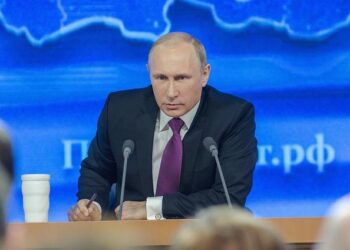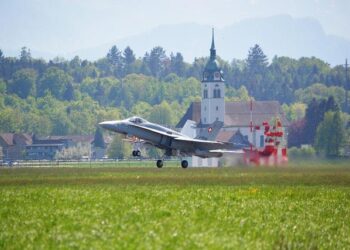The recent fall of Pokrovsk marks a significant turning point in the ongoing Russia-Ukraine conflict, underscoring the shifting dynamics on the battlefield. Once a strategically vital city in the Donetsk region, Pokrovsk’s capture by Russian-backed forces reveals not only the evolving military tactics employed but also the broader implications for control over Eastern Ukraine. This development offers crucial insights into the current state of the war, the resilience of Ukrainian defenses, and the geopolitical stakes that continue to shape one of the most closely watched conflicts in the world today.
The Strategic Significance of Pokrovsk in the Russia-Ukraine Conflict
Pokrovsk has emerged as a critical fulcrum in the ongoing Russia-Ukraine war due to its geographic placement and infrastructural value. Positioned as a gateway between the Russian-held territories and central Ukraine, control over Pokrovsk enables forces to secure supply lines and exert influence over nearby transport routes. Its fall marks not just a territorial loss but disrupts the logistical framework that has underpinned Ukrainian defensive operations in the Donetsk region. The city acts as a defensive buffer for larger urban centers, making its capture a strategic advantage for advancing Russian units aiming to consolidate control and push further into Ukrainian-held zones.
Beyond mere geography, Pokrovsk holds symbolic weight as a hub of local governance and civilian resilience. Its capture signals a psychological blow to Ukrainian morale while providing Russian forces with a propaganda tool to demonstrate steady territorial gains. The city’s strategic facets can be summarized as follows:
- Transport Nexus: Control of major railways and highways critical for troop movements and supply chains.
- Military Staging Ground: Enables concentration and deployment of forces for offensives in surrounding areas.
- Information Warfare: Serves as a symbol of momentum affecting civilian and combatant morale.
| Factor | Ukrainian Advantage | Impact of Fall |
|---|---|---|
| Geographic Position | Served as defensive buffer | Exposes deeper regions to assault |
| Logistical Control | Maintained supply flows | Disrupts Ukrainian supply network |
| Civilian Morale | Symbol of resistance | Undermines local confidence |
Implications of the Fall for Ukrainian Defense and Morale
The capture of Pokrovsk marks a significant psychological setback for Ukrainian forces, shaking the confidence built over months of resistance. More than a mere territorial loss, it symbolizes a crack in the defensive line that has long been considered pivotal for holding the eastern front. Ukrainian troops, while resilient, now face the daunting reality of contending with an enemy emboldened by recent success, which could potentially accelerate the momentum of Russian offensives in the region.
Beyond the battlefield, the ripple effects on morale among Ukrainian defenders and civilians are profound. The fall has sparked urgent discussions over resource allocation, strategic realignment, and the necessity of bolstered international support. Analysts suggest the following immediate consequences:
- Increased Pressure on Surrounding Positions: Neighboring towns and strongholds may have to divert forces, creating vulnerabilities elsewhere.
- Challenges to Supply Lines: Disrupted logistics could hamper frontline units’ effectiveness and prolong recovery efforts.
- Morale Fluctuations: Soldiers and citizens may experience decreased morale, necessitating strengthened communication and leadership.
| Aspect | Pre-Fall Status | Post-Fall Impact |
|---|---|---|
| Defensive Line Stability | Stable, high confidence | Breached, increased uncertainty |
| Troop Morale | Steady with cautious optimism | Tentative, risk of decline |
| Supply Routes | Functioning with some constraints | Compromised, requiring rerouting |
Recommended Tactical Shifts and International Support in Response to Emerging Threats
In light of recent battlefield developments, including the loss of strategic locations like Pokrovsk, it is imperative for Ukrainian forces to recalibrate their operational approaches. Flexible defense lines, increased use of mobile units, and enhanced intelligence-sharing are becoming critical to counteract the evolving tactics of Russian advances. Moreover, bolstering decentralized command structures can empower frontline commanders to respond swiftly to local threats, reducing vulnerabilities caused by rigid hierarchical controls.
On the international front, sustained and targeted support is essential. Beyond conventional arms supplies, providing Ukraine with advanced cybersecurity tools, reconstruction aid, and humanitarian assistance will strengthen resilience against multifaceted aggression. Below is a summary of key support areas gaining traction among Ukraine’s allies:
| Support Category | Recent Developments | Impact |
|---|---|---|
| Military Aid | Supply of HIMARS and drones | Improved precision strikes, battlefield mobility |
| Cyber Defense | Collaboration with NATO cyber units | Enhanced network security, threat detection |
| Economic Sanctions | Expanded sanctions targeting key sectors | Pressure on Russian war finance |
| Humanitarian Aid | Increased medical and refugee support | Mitigation of civilian suffering |
In Conclusion
The fall of Pokrovsk marks a significant development in the ongoing Russia-Ukraine conflict, underscoring the shifting dynamics on the ground and the persistent challenges faced by both sides. As the situation continues to evolve, the battle for control over strategic locations like Pokrovsk offers a stark reminder of the war’s complex and protracted nature. Analysts and policymakers alike will be closely watching how this event influences broader military strategies and the prospects for a resolution in the months ahead.
















